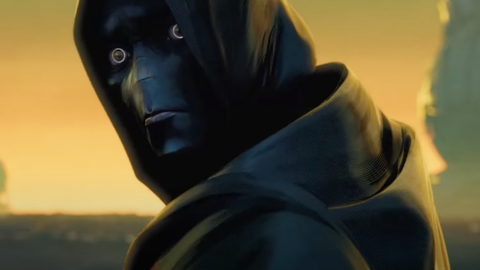AppleTV+’s new supernatural docuseries The Enfield Poltergeist is based on the same alleged haunting as 2016’s The Conjuring 2. And there are superficial similarities that run through both: Mysterious rappings on the walls at night. A terrified little girl in a long red nightgown. A foulmouthed ghost named Bill who says he died in an easy chair in the corner of the living room. But there’s one big difference that reveals everything about the contrast between these two approaches to the events that took place at 284 Green Street in North London between 1977 and 1979. You see, The Conjuring 2 is scary.
Not that The Enfield Poltergeist doesn’t have its moments. Director Jerry Rothwell and crew utilize original field recordings of the phenomenon to chilling effect. Some of this audio is paired with haunting visuals – think shadows dancing across the walls of darkened bedrooms and bare light bulbs at the top of steep stairs. Some of it is lip-synched by actors, many of whom bear resemblances to the real people they’re portraying. Together, they give the series an uncanny quality.
But the documentary version isn’t scary in the same way a James Wan movie is scary. The bangs and knocks generally happen off screen, and the timing of the scares isn’t expertly calibrated to make viewers jump out of their seats. Instead, The Enfield Poltergeist moves at the speed of a real-life paranormal investigation, meaning that it unfolds subtly – upsetting audio of kids screaming and crying notwithstanding – and incrementally, which is a kinder way of saying that the re-creations, initially quite unsettling, start to get repetitive around hour two of this four-hour series.
To keep the story moving, The Enfield Poltergeist introduces doubts about the authenticity of the poltergeist activity that surrounded 11-year-old Janet Hodgson at her family’s modest working-class home. In early talking-head interviews, neighbors and other eyewitnesses all maintain that what they saw all those years ago was proof of the paranormal. “I believe that I talked to a ghost,” Richard Grosse, son of paranormal investigator Maurice Grosse, says soberly into the camera in episode 2.
But by episode 4, a cousin of Janet’s is walking back the hyperbole: “To me, at the time, it was real,” he says. The Enfield poltergeist case is one of the best-documented in history, which means that a parade of journalists and scientific (and pseudoscientific) investigators passed through the Hodgson’s council house in the 18 months when “Bill” terrorized the family on a near-nightly basis. Chief among them was Grosse, described as “a thorough nuisance” by one of his fellow ghost hunters at the very staid, very British Society for Psychical Research. Grosse, who died in 2006 and is represented here by diary entries read aloud by former colleagues, was an inventor and mechanical engineer by trade. Initially a skeptic, he soon became convinced that the spirits tormenting Janet and her family were real.
But not everyone bought it. Psychologist Anita Gregory – also deceased, and also represented here by a former SPR colleague – provides the strongest counterpoint, pointing out that the phenomenon needed to be viewed in the context of the family dynamic in which it manifested. Several interviewees acknowledge that the Hodgson household was “tense,” but The Enfield Poltergeistdoesn’t press what’s clearly a sensitive subject. Instead, a plethora of wild theories – telekinesis, parallel dimensions, cursed furniture, a haunted pet bird – emerge alongside a very simple one: That Janet was faking all of this for attention.
As the possibilities of what actually happened are laid out, it becomes clear that there’s only one person who can answer the questions being raised here, and that’s Janet herself. Her initial appearance midway through episode three is presented with the appropriate amount of fanfare, but her presence is disarming enough that it completely shifts the tone of the series.
Additional place-setting is done with vintage news clips and dub and punk tracks that establish the hopeless atmosphere of late-’70s England. But the most notable stylistic flourish is the precise re-creation of 284 Green Street (plenty of photos and footage of which were captured, remember) that was constructed for the show. This is employed in a manner similar to Kitty Green’s 2017 documentary Casting JonBenet, which also pulled back to show the artifice of lighting kits and sound stages surrounding an investigation into the murky nature of “truth.” Reporters, witnesses, and eventually Janet and her sister Margaret walk through the set, marveling at how similar it is to the “real thing.”
This flimsiness is built into The Enfield Poltergeist as a whole. The documentary takes an open-minded attitude towards the phenomenon, choosing in the end to focus on the emotional impact it had on those involved rather than trying to definitively prove or disprove the existence of ghosts. Is that a cop-out? Maybe. Is it true to the subjective nature of real-life paranormal experiences? Absolutely.




